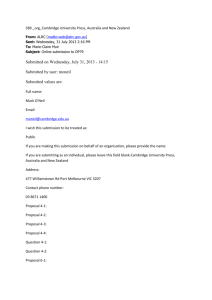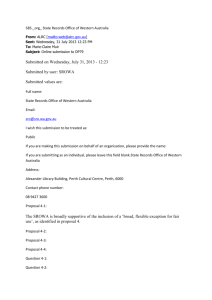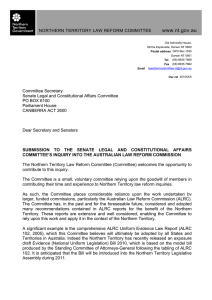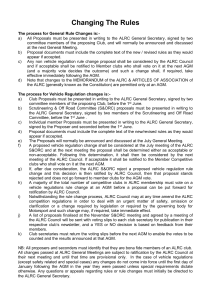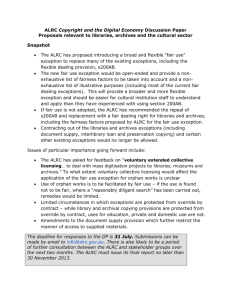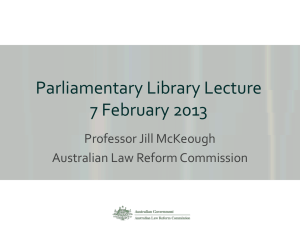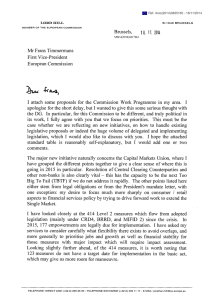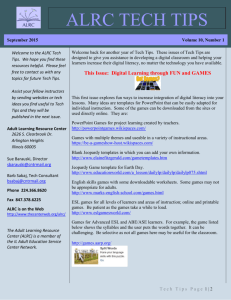317. M Aronson Full name: Mark Aronson Proposal 4
advertisement
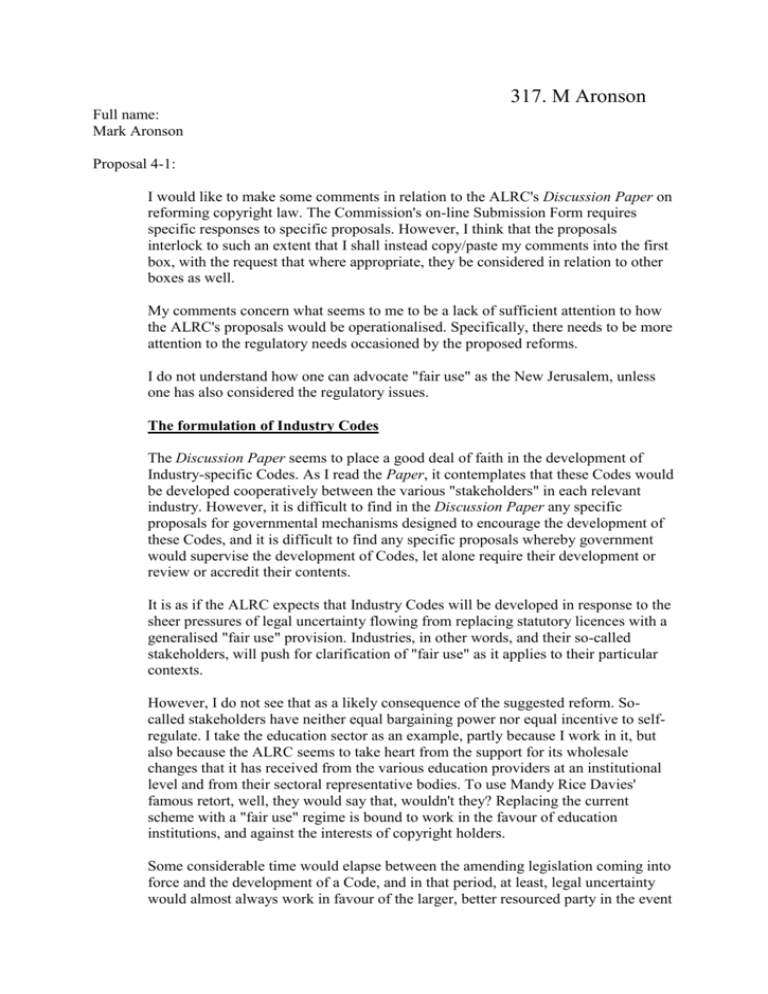
317. M Aronson Full name: Mark Aronson Proposal 4-1: I would like to make some comments in relation to the ALRC's Discussion Paper on reforming copyright law. The Commission's on-line Submission Form requires specific responses to specific proposals. However, I think that the proposals interlock to such an extent that I shall instead copy/paste my comments into the first box, with the request that where appropriate, they be considered in relation to other boxes as well. My comments concern what seems to me to be a lack of sufficient attention to how the ALRC's proposals would be operationalised. Specifically, there needs to be more attention to the regulatory needs occasioned by the proposed reforms. I do not understand how one can advocate "fair use" as the New Jerusalem, unless one has also considered the regulatory issues. The formulation of Industry Codes The Discussion Paper seems to place a good deal of faith in the development of Industry-specific Codes. As I read the Paper, it contemplates that these Codes would be developed cooperatively between the various "stakeholders" in each relevant industry. However, it is difficult to find in the Discussion Paper any specific proposals for governmental mechanisms designed to encourage the development of these Codes, and it is difficult to find any specific proposals whereby government would supervise the development of Codes, let alone require their development or review or accredit their contents. It is as if the ALRC expects that Industry Codes will be developed in response to the sheer pressures of legal uncertainty flowing from replacing statutory licences with a generalised "fair use" provision. Industries, in other words, and their so-called stakeholders, will push for clarification of "fair use" as it applies to their particular contexts. However, I do not see that as a likely consequence of the suggested reform. Socalled stakeholders have neither equal bargaining power nor equal incentive to selfregulate. I take the education sector as an example, partly because I work in it, but also because the ALRC seems to take heart from the support for its wholesale changes that it has received from the various education providers at an institutional level and from their sectoral representative bodies. To use Mandy Rice Davies' famous retort, well, they would say that, wouldn't they? Replacing the current scheme with a "fair use" regime is bound to work in the favour of education institutions, and against the interests of copyright holders. Some considerable time would elapse between the amending legislation coming into force and the development of a Code, and in that period, at least, legal uncertainty would almost always work in favour of the larger, better resourced party in the event of a dispute. And when a Code is developed, who is to say that it will strike a fair balance between the institutions and the copyright holders? The answer will in practice surely be: the more powerful party at the bargaining table. That strikes me as a peculiar way of giving content to law. To my mind, law is most needed by those with relatively less power, and least needed by the powerful. There is a further issue concerning Industry Codes, which is that they so often place far too much faith in the idea of self-regulation. Without oversight bodies tasked with accrediting Codes and hearing appeals, the ALRC's faith in Codes as an alternative to the currentlymore specific legislation seems to me to be misplaced. Survey data Forgive me if I've missed it, but I have not found in the Discussion Paper any mechanisms for actually measuring copyright usage. The current statutory licence schemes require users to complete surveys on an occasional basis, and the results of these are used to provide some sort of evidencebased view of the fees payable to copyright holders. If we are to switch to a "fair use" regime regulated only by Industry Codes, where will the usage data come from? In other words, how will copyright holders know whether their works are being used, and the extent of that use? Mark Aronson 12 July 2013. Proposal 4-2: Proposal 4-3: Proposal 4-4: Question 4-1: Question 4-2: Proposal 6-1: Question 6-1: Proposal 7-1: Proposal 7-2: Proposal 7-3: Proposal 7-4: Proposal 8-1: Proposal 8-2: Proposal 8-3: Proposal 9-1: Proposal 9-2: Proposal 9-3: Proposal 9-4: Proposal 9-5: Proposal 10-1: Proposal 10-2: Proposal 10-3: Proposal 11-1: Proposal 11-2: Proposal 11-3: Question 11-1: Proposal 11-4: Proposal 11-5: Proposal 11-6: Proposal 11-7: Proposal 12-1: Proposal 12-2: Proposal 12-3: Proposal 13-1: Proposal 13-2: Proposal 13-3: Proposal 14-1: Proposal 14-2: Proposal 14-3: Proposal 15-1: Proposal 15-2: Question 15-1: Proposal 15-3: Question 15-2: Proposal 16-1: Question 16-1: Proposal 16-2: Question 16-2: Question 16-3: Proposal 17-1: Additional comments?: File 1: File 2:
